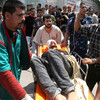
Internal fighting in Gaza is now entering its fourth day with at least 37 dead and 114 injured since Sunday. This is the third round of intense factional fighting seen in Gaza this year leaving at least 128 Palestinians dead and 692 injured since 1 January 2007. Following the killing of a senior Fatah leader on Sunday 13 May in Jabalia in northern Gaza, violence erupted throughout the Gaza Strip and particularly in Gaza City. Two attempted ceasefires collapsed within hours and fighting continued between Fatah forces and Hamas and its affiliated Executive Support Force (ESF). Read more about Situation Report: Rising death toll in Gaza
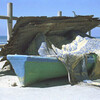
While Palestinian fishermen have recently been allowed to resume some fishing activities in the Gaza Strip’s coastal waters following a near total ban since June 2006, restrictions on where they can fish continue to undermine the industry. More than 40,000 Gazans depend on the fishing industry as their primary source of income. However, they have become progressively impoverished in the last six years, requiring assistance. The World Food Programme (WFP), United Nations Relief and Works Agency for Palestine Refugees in the Near East (UNRWA) and other humanitarian agencies now provide food and support job creation for the fishing families. Read more about Restrictions threaten Gaza fishermen's livelihoods
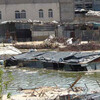
United Nations relief agencies are responding to the needs arising from the bursting of a sewage reservoir in an emergency filtration basin at the waste water treatment plant in Beit Lahia in Gaza. According to latest reports, waste flooding into the nearby Bedouin village of Um Al Nasser killed four people and injured 18, while 11 people remain missing. Ninety-six homes were destroyed or damaged. Between 250 and 300 families have been relocated to a temporary camp situated on higher ground between the Bedouin village and the former Israeli Nissanit settlement. Read more about United Nations aids victims of sewage spill in Gaza
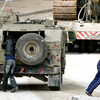
At approximately 02:30 on 28 February, a large force of IDF soldiers and Israeli Border Police re-entered Nablus. This latest incursion marks the continuation of Operation “Hot Winter”, the largest military incursion in three years in Nablus city. Since re-entering Nablus in the early hours of this morning, as was the case with the first incursion, the IDF has placed the Old City and its surroundings under curfew. The IDF has again taken over the facilities of local television and radio stations to announce the names of seven wanted Palestinians they are specifically seeking. Read more about OCHA: Nablus Situation Report

The ceasefire between Palestinian factions announced by Palestinian Foreign Minister, Mohammed al Zahar in the early hours of this morning is holding. The ceasefire follows the heaviest loss of life from inter- factional fighting recorded by OCHA with at least 34 deaths and 133 injuries vbetween the evening of 25 January and the evening of 29 January. Three Palestinians, including a 17 year-old boy, were killed and 15 injured by the IDF in January. The majority of casualties occurred in the northern Gaza Strip. Overall, Palestinian access in and out of the Gaza Strip remains severally restricted. The extent of the power outages during the 2006- 2007 winter period is unprecedented. Read more about OCHA: Gaza Situation Report
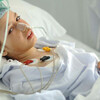
“As a matter of urgency, I call on all States to implement an immediate freeze on the use of cluster munitions. This freeze is essential until the international community puts in place effective legal instruments to address urgent humanitarian concerns about their use,” said Jan Egeland, United Nations Under-Secretary-General for Humanitarian Affairs and Emergency Relief Coordinator ahead of the convening of the Third Review Conference on the Convention on Conventional Weapons (CCW), which opened today in Geneva. “I welcome the entry into force of Protocol V to the Convention. I call upon all States to ratify and implement it in order to help us in the humanitarian community address the challenges posed by cluster munitions in post-conflict settings,” added Mr. Egeland. Read more about UN Emergency Relief Coordinator: End use of cluster munitions
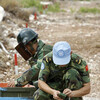
Fourteen people have been killed and 90 injured from all types of unexploded ordnance in Lebanon from 14 August until 19 September. Of these totals, children (6 years to 18 years of age) accounted for two of the fatalities and 32 of the injuries, according to Lebanon’s National Demining Office. All the fatalities and most of the injuries resulted from cluster munitions. According to UNHCR, some 200,000 people remain displaced because of the level of destruction in their villages, and because of the UXOs and cluster sub-munitions which contaminate their houses and hometowns. Read more about 200,000 remain displaced

The sheer amount of unexploded ordnance that remains in south Lebanon, one of the poorest areas of the country, has implications for the future social and economic livelihood of the region. The quick destruction of remaining unexploded ordnance, particularly cluster bomb sub-munitions, is critical to restoring normalcy to the region and, ultimately, to a secure and lasting peace. It is vital that a social safety net be quickly established and that agricultural livelihoods are restored to prevent people from south Lebanon slipping deeper into poverty. Read more about A lasting legacy: The deadly impact of cluster bombs in Southern Lebanon
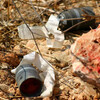
According to the United Nations Mine Action Coordination Cell (UNMACC) on-the-ground assessments, most the Israeli bombing assaults occurred during the last 72 hours of the conflict, during which some 90 per cent of all cluster-bomb strikes occurred. Up to 100,000 unexploded cluster bomblets remain in south Lebanon and must be defused and destroyed. The Government of Lebanon (GoL) Higher Relief Council (HRC) reports the casualty figures at 1,187 killed and 4,080 injured. As of 29 August, 381 cluster bomb strike locations have been identified and UNMACC teams have destroyed 2,606 sub munitions. Read more about OCHA: 100,000 unexploded cluster bomblets in south Lebanon

The Government of Lebanon (GoL) Higher Relief Council (HRC) reports the casualty figures at 1,187 killed and 4,061 injured. Most of the recent casualties have been caused by UXOs. As of 28 August, 359 individual cluster bomb strike locations have been confirmed and recorded. Given that areas of lower priority and a number of villages with IDF presence nearby have yet to be visited, it is estimated the total number of strikes could be in excess of 400. Un-exploded bombs (UXB) dropped by aircraft and ranging from 500lb to 2000lb, continue to be located. Many large, aircraft bombs lie un-exploded in people’s houses and gardens. Read more about OCHA: 359 individual cluster bomb strike locations recorded









